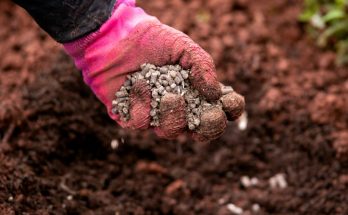
Seed germination is the initial phase of a plant’s life, where a seed grows into a seedling. This process is vital because it establishes the foundation for a healthy, productive plant.
♻️ Process of Seed Germination:
Seed germination begins when a seed absorbs water, a process known as imbibition. This causes the seed to swell, breaking the seed coat, and activates enzymes that fuel growth. With sufficient water, oxygen, and the right temperature, the seed’s stored nutrients provide energy for the growth of the radicle (the first root) and the shoot, which later becomes the plant’s stem and leaves.
During germination, the root establishes a connection with the soil to absorb more water and nutrients, while the shoot grows toward the light for photosynthesis. As the seedling emerges, it begins to rely on soil nutrients to support further development.
♻️ Nutrients required in this Stage:
▪️Nitrogen (N): A key component of chlorophyll, nitrogen supports initial leaf formation and helps the seedling produce energy through photosynthesis. This early foliage allows the plant to capture sunlight efficiently.
▪️Phosphorus (P): Essential for root development and energy transfer within the plant. Phosphorus is crucial for cell division and forming the first roots, allowing seedlings to establish a firm grip on the soil.
▪️Calcium (Ca): Provides strength to cell walls, helping seedlings maintain structure and withstand environmental stress. Calcium aids in root and shoot growth and prevents early-stage disorders.
▪️Magnesium (Mg): A vital part of chlorophyll, magnesium supports photosynthesis, allowing seedlings to convert sunlight into energy.
▪️Zinc (Zn) and Boron (B): These micronutrients promote cell division and growth. Zinc aids enzyme function, and boron helps with root and shoot elongation, which is vital for healthy seedling structure.
♻️ Factors Affecting Effective Germination and Seedling Stage
▪️Water: Sufficient moisture is essential for seeds to swell and begin germination. However, too much water can suffocate the seed by blocking oxygen uptake, leading to poor germination.
▪️Temperature: Each plant species has an optimal temperature range for germination. If the temperature is too low, germination may be slow or not occur at all; if too high, seeds may become dormant or damaged.
▪️Oxygen: Seeds need oxygen for respiration, a process that provides energy for growth. Poor soil aeration, often caused by waterlogging, can hinder oxygen supply, slowing germination
▪️Soil Quality and pH: Soil that is too acidic or alkaline can hinder nutrient absorption. A balanced pH helps ensure that essential nutrients are available to the seedling
▪️Seed Quality: Healthy, mature seeds have a better chance of germinating successfully. Old or damaged seeds may have reduced vigor, affecting germination rates and seedling health
Article by Rahul Padwal



